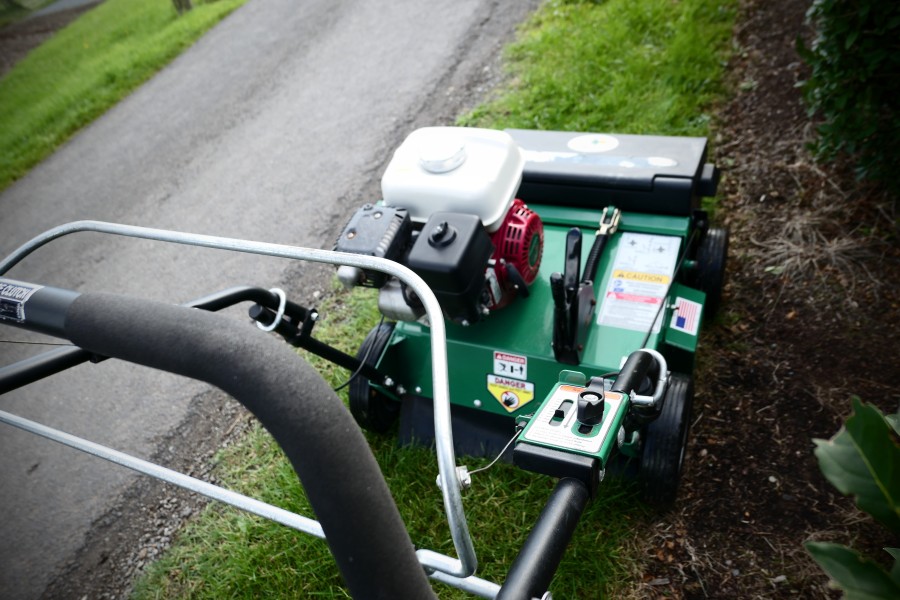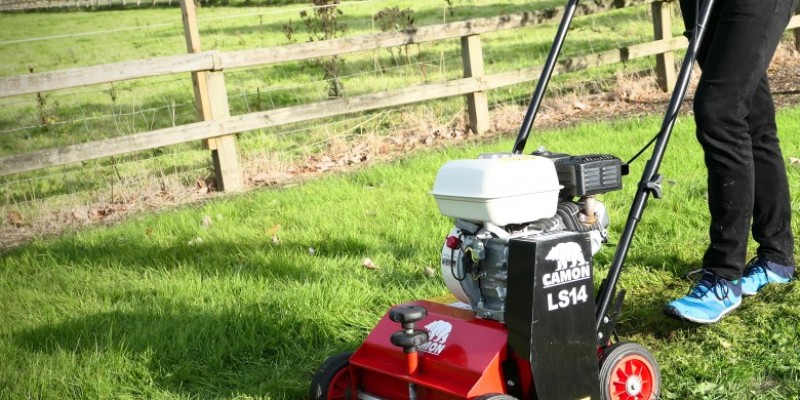Not every lawn needs dethatching, but whenever your lawn does need it, knowing how to dethatch it properly is crucial to your garden's health. If done properly, dethatching will help restore your garden and keep it beautiful for years to come. By learning the basics of dethatching, you can keep your thick, lush grass on the right track.
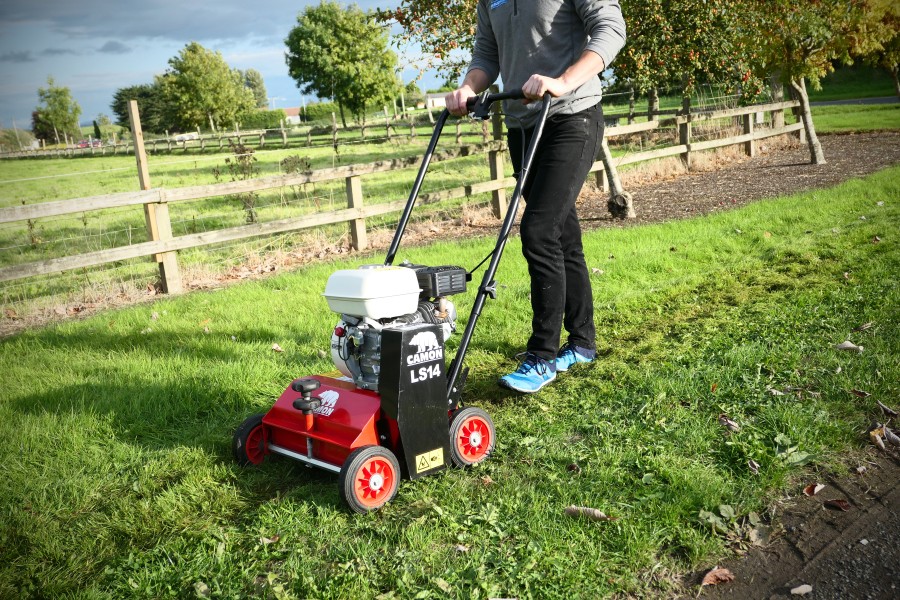 What is thatch?
What is thatch?
If you were to look at a cross-section of grass roots and soil, the layer of organic debris is known as thatch. It is a mix of dead and living plant material, which forms at the base of grass plants where the stems meet the roots and soil. Some organic matter, such as mall grass cuttings of mulched leaves, break down quickly in healthy lawns, but other materials take much longer to decompose. Whenever your buildup outpaces the breakdown, your lawn's thatch layer grows thicker.
A thin thatch layer, less than 1/2 inch thick is beneficial to lawn health. It acts as an organic mulch to help conserve soil temperature and moisture, as well as allowing water, air and nutrients to penetrate into the soil and reach waiting root plants.
Thatch layers of 1 inch or more become more harmful than beneficial. Thick thatch blocks the air, water and nutrients from penetrating the soil. Grass roots can become trapped in thatch, which makes them vulnerable to heat, drought and stress. If water from irrigation accumulates in the thatch layer, grass roots may also suffer from a lack of air. Thick thatch also provides a breeding ground for lawn disease and insect pests.
When to Dethatch your lawn?
Always check your lawn's thatch layer before attempting dethatching. Take a trowel or spade and dig up a small wedge of your lawn grass and soil. You should be able to measure the thatch layer. If it is 1-2 inches or more, you may have seen this reflected in the poor colour of your grass and its weak, thin growth.
Depending on the type of grass and seed, you should time your dethatching with peak growth times to help speed up your lawn's recovery. For cool-season grasses, you should dethatch in late summer or early autumn. Whilst warm-season grasses should be dethatched in mid-late spring.
Lawn Aeration and dethatching are two different processes, but can work together to help your lawn. Our lawn aerator removes small cores of soil, including their thatch layer to allow water and nutrients to penetrate thatch and compacted soil. This can help prepare for thatch removal and speeds up the breakdown of existing thatch.
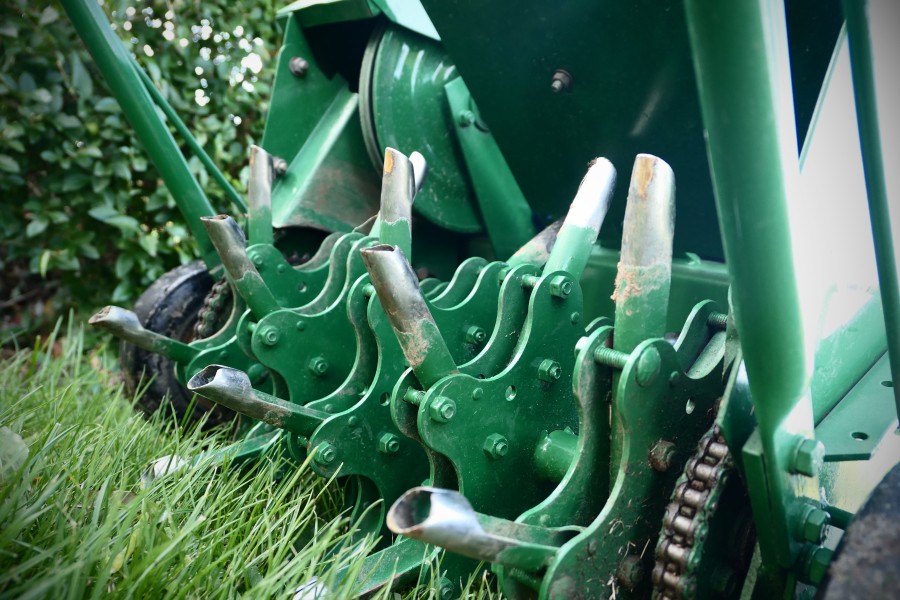 How to Dethatch your lawn?
How to Dethatch your lawn?
If your thatch is over 2 inches thick, you may want to seek professional advice. Dethatching such thicknesses could take more than one removal session, and removing too much at once can damage grass roots.
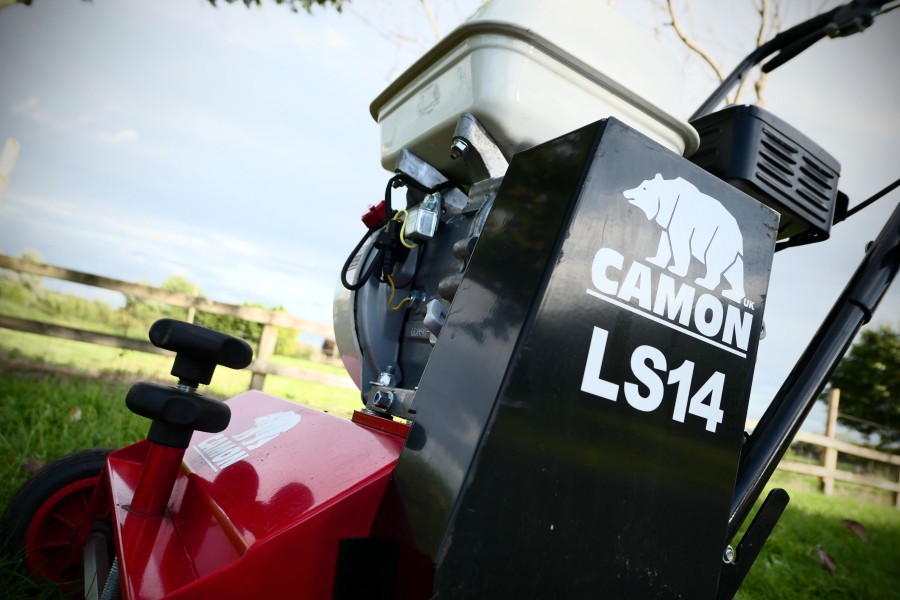
What to do after dethatching?
With dethatching done, it's an ideal time to overseed your lawn and get it back on track for thick, lush, green beauty. Choosing the right grass seed can improve your lawn's sustainability as you overcome thatch. Our overseeder combines a seeding function with a slitter, to re-establish healthy lawns and restore bare spots and thinning. Slicing depth is also adjustable to match turf conditions.
